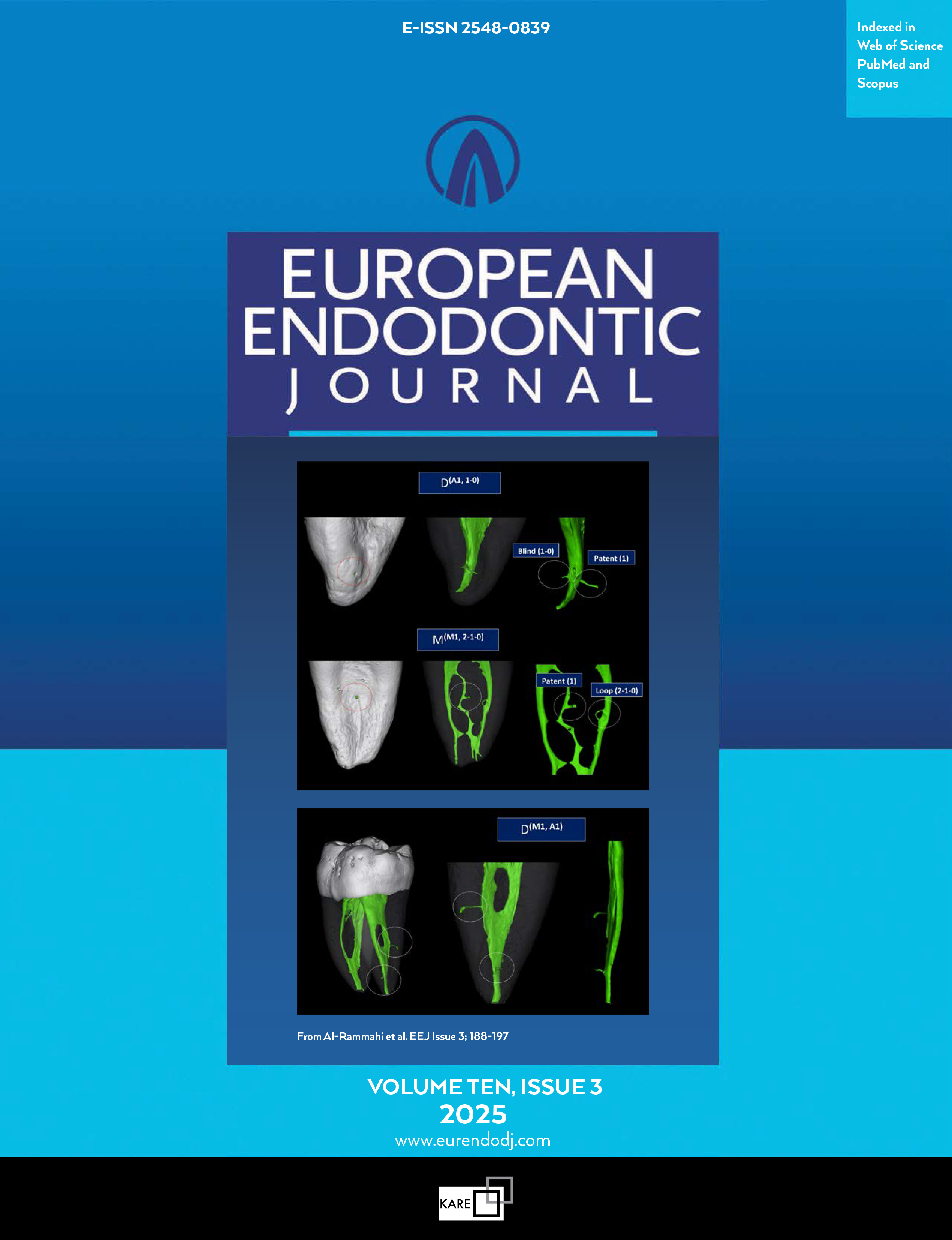Metrics
2024 IMPACT FACTOR
5 year Impact Factor
Eigenfactor Score
2024 CiteScore
Journal Citation Reports
(Clarivate 2025, JIF Rank)
A Novel Educational Approach For Safe Endodontic Syringe Irrigation: A Randomised Controlled In Vitro Study
Eva Magni, Ana Scianna, Thomas Connert, Wadim Leontiev, Roland Weiger, Florin EggmannDepartment of Periodontology, Endodontology, and Cariology, University Center for Dental Medicine Basel UZB, University of Basel, Mattenstrasse 40, CH-4058, Basel, Switzerland.Objective: Syringe irrigation, commonly used for delivering sodium hypochlorite (NaOCl) during root canal treatment, requires careful handling to prevent NaOCl extrusion into periapical tissues. This randomised con-trolled in vitro study aimed to quantify syringe plunger forces exerted by dental undergraduates and to assess the impact of an educational intervention on adherence to safe irrigant delivery parameters.
Methods: Fifty-two undergraduates performed syringe irrigation at three intervals: baseline (T1), af-ter two weeks (T2), and after 12 weeks (T3). At T1, irrigation was conducted without prior educational intervention, while at T2, it was preceded by an intervention. The educational intervention involved a short video highlighting safe irrigation practices, including plunger force and time recommendations for syringe irrigation. At T3, the undergraduates were randomly allocated to two groups: One received a repeated intervention, while the other did not. Syringe irrigation was performed on a 3D-printed tooth using two side-vented cannulas: one of 25 Gauge (G) and another of 30 G. A syringe equipped with a force sensor recorded the plunger forces. Based on earlier research, plunger forces exceeding 10 Newtons (N) for the 25 G cannula and 40 N for the 30 G cannula were deemed critical. The data were subjected to descriptive statistical analyses.
Results: Overall, the mean of maximum values of plunger forces remained under 10 N for the 25 G and below 20 N for the 30 G cannulas, with only a few measurements exceeding 40 N. Instances of surpassing the critical plunger force threshold were more common with the 25 G side-vented cannula than with the 30 G variant. At T3, the group that received the repeated educational intervention exhibited lower average maximum plunger forces for both cannulas than the group that did not receive the intervention.
Conclusion: Integrating plunger force measurements with targeted educational interventions presents an effective approach for instructing undergraduates in the proper techniques of syringe irrigation. The findings suggest that, generally, undergraduates do not apply excessive plunger forces that could risk apical irrigant extrusion. Implementing repeated educational interventions decreased the plunger forces exerted by under-graduates, underscoring its effectiveness in fostering safe endodontic irrigation.
Manuscript Language: English
(326 downloaded)


